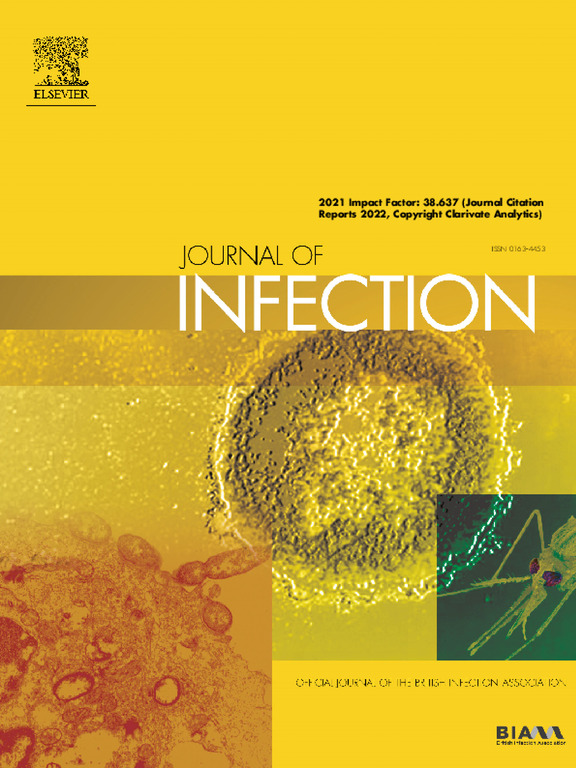Pentraxin-3, MyD88, GLP-1, and PD-L1: Performance assessment and composite algorithmic analysis for sepsis identification
IF 11.9
1区 医学
Q1 INFECTIOUS DISEASES
引用次数: 0
Abstract
Objectives
Accurate diagnosis of sepsis is needed to initiate life-saving treatment decisions. Biomarkers capable of identifying both acute infection and sepsis are required to assist clinicians.
Methods
A real-life heterogeneous cohort of 388 patients with suspected acute infections was recruited at presentation to the ED. Nine emerging host-response biomarkers (MyD88, MMP-8, leptin, ENA-78, fractalkine, PD- L1, pentraxin-3, TRAIL, and GLP-1) were quantified using a multiparameter assay. We performed AUROC analysis for the endpoints bacterial infection, sepsis, and 30-day mortality. We further assessed diagnostic performance when combining these biomarkers using a machine learning algorithm.
Results
Particularly, MyD88, PD-L1, and pentraxin-3 presented high AUROCs for the endpoints bacterial infection (≥0.87), sepsis (≥0.81), and 30-day mortality (≥0.71). Seven out of the nine investigated biomarkers showed statistically significant discrimination for all three endpoints. A combined algorithm via the XGBoost model using pentraxin-3, MyD88, and GLP-1 was used for sepsis prediction, with an AUROC of 0.89, higher than clinical assessment via NEWS-2 (0.83) or procalcitonin (0.81).
Conclusion
Pentraxin-3, MyD88, GLP-1, and PD-L1 are a promising complementary set of biomarkers for risk assessment and stratification. When a trained multiparameter classifier is used, the combination of biomarkers results in a valid tool for sepsis diagnosis.
Trial registration
DRKS00020521, DRKS00017395
Pentraxin-3、MyD88、GLP-1和PD-L1:脓毒症鉴定的性能评估和复合算法分析
目的:脓毒症的准确诊断是启动挽救生命的治疗决策所必需的。临床医生需要能够识别急性感染和败血症的生物标志物。方法对388例疑似急性感染患者进行现实异质性队列研究,采用多参数法对9种新出现的宿主反应生物标志物(MyD88、MMP-8、瘦素、ENA-78、fractalkine、PD- L1、pentraxin-3、TRAIL和GLP-1)进行定量分析。我们对终点细菌感染、败血症和30天死亡率进行了AUROC分析。当使用机器学习算法结合这些生物标志物时,我们进一步评估了诊断性能。结果MyD88、PD-L1和pentraxin-3在细菌感染(≥0.87)、脓毒症(≥0.81)和30天死亡率(≥0.71)的终点auroc较高。在所调查的9个生物标志物中,有7个在所有三个终点都显示出统计学上显著的歧视。采用XGBoost模型联合pentraxin-3、MyD88和GLP-1进行脓毒症预测,AUROC为0.89,高于NEWS-2(0.83)或降钙素原(0.81)的临床评估。结论pentraxin -3、MyD88、GLP-1和PD-L1是一组有前景的互补生物标志物,可用于风险评估和分层。当使用经过训练的多参数分类器时,生物标志物的组合将成为脓毒症诊断的有效工具。试验注册号为drks00020521, DRKS00017395
本文章由计算机程序翻译,如有差异,请以英文原文为准。
求助全文
约1分钟内获得全文
求助全文
来源期刊

Journal of Infection
医学-传染病学
CiteScore
45.90
自引率
3.20%
发文量
475
审稿时长
16 days
期刊介绍:
The Journal of Infection publishes original papers on all aspects of infection - clinical, microbiological and epidemiological. The Journal seeks to bring together knowledge from all specialties involved in infection research and clinical practice, and present the best work in the ever-changing field of infection.
Each issue brings you Editorials that describe current or controversial topics of interest, high quality Reviews to keep you in touch with the latest developments in specific fields of interest, an Epidemiology section reporting studies in the hospital and the general community, and a lively correspondence section.
 求助内容:
求助内容: 应助结果提醒方式:
应助结果提醒方式:


